CELEBRATING 99 YEARS OF MINISTRY AT
CALVARY ASSEMBLYHistory
FOUNDING PASTOR
Reverend Paul Christopher (P.C.) Nelson
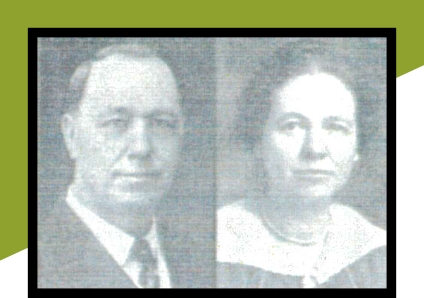
The Nelson family experienced constant tragedy. On the boat to America, they were hit by a hurricane where Mrs. Nelson became so sick, she almost died. When they arrived in America, they were robbed of all the money they had, and the home where they were staying was burned down with all their belongings inside. One daughter died at birth, another daughter died at the age of six, a son died at the age of two weeks. P.C. Nelson’s dad then died of a horrible farming accident when P.C. Nelson was eleven years old. Two weeks later the firstborn son died of asphyxiation, and two years later, another son drowned at the age of twelve. Two more of the children were overcome with mental illness and sent to state homes to live.
After P.C. Nelson lost his father at the age of eleven, he surrendered his life to the Lord. Running home five miles, he shared with his mother of the incredible experience he had with the Lord. It was here, he felt the calling to preach. Peer pressure and persecution brought this young new Christian’s newfound salvation to a halt. Those who lived around him heard about his conversion, and so belittled him, that P.C. Nelson ended up walking away from the Lord. Later that year, because his mother had no way to take care of him, he was given away to different families to be raised.
After nine years of running from the Lord, at 1:00 a.m. on the morning of November 20, 1888, a now 20-year-old P.C. Nelson knelt by his bed and surrendered his life to Christ once again. On August 31, 1889, P.C. Nelson was licensed to preach by the First Baptist Church in Harlan, Iowa.
From that moment on, P.C. Nelson not only pastored at small Baptist churches, but he traveled extensively doing numerous revivals as an evangelist in Baptist Churches all over the country. In October of 1920, P.C. Nelson was hit by a car and crippled. He was miraculously healed and then filled with the Holy Spirit in November of that same year.
It wasn’t long before he realized that a veil had been lifted off his spiritual eyes, and he began to preach and teach with an anointing he had never experienced before. God began to use him in a healing ministry, and he would see healings take place everywhere he preached. Nelson said
Each time he prayed, God revealed more to Nelson about how he had been trying to do his work as a minister in a way that was utterly impossible; trying to win men and women by offering them a gospel in which there was no relief for their sufferings and afflictions. He said

During the first year, under Reverend Nelson’s teachings and leadership, well over 600 people were converted, at least 125 were baptized in the Holy Ghost, and 163 were taken to Highland Lake in East Galesburg and baptized in water. Huge crowds gathered on the hillsides to watch, and participate in the services. In every service, Reverend Nelson and his wife, Myrtle Garmong Nelson, prayed for the sick and afflicted, which brought many verified healings and conversions.
Newspaper accounts tell of “standing room only” crowds in every service in the Armory. Sunday afternoon services had to be held in the drill hall to accommodate the crowds.
Nelson’s philosophy was, “To take the whole gospel for the whole man to the whole world, will take the whole church”. Over the platform, he raised a huge banner that read
Many accounts of the meetings were recorded; one on October 11, 1924, said P.C. Nelson’s topic at the 2:30 p.m. service was “Christianity and not religion are Galesburg’s need”. “Many have religion, “he said, “but do not know Christ Himself”. He indicated that Galesburg needed “a revival of old-time religion to save the down and out and the up and out”.
On the following Wednesday, October 29, 1924, the “Tabernacle” was completed enough for services; and on Sunday, November 2, 1924, it was dedicated as a place of worship, and named Bethel Church. Dr. and Mrs. C.A. Barnes, and Miss Ruth White, gave special numbers in song. Many were anointed for their healing. This became the first organized Pentecostal church in this part of Illinois.
Later, the men of the church erected a permanent church, inside the Tabernacle, of fired blocks, and tore the Tabernacle down. They had to bring in trucks and wagons to take away the many stretchers, wheel chairs, crutches, braces, ear trumpets, spectacles, and other articles left behind when people who were healed abandoned them. Most had been hanging on the walls of the Tabernacle.
Bethel Church had an initial membership of approximately 200 regular attendants, though no membership roll was kept. Mrs. A.A. Carpenter succeeded Reverend P.C. Nelson in 1925. She had assisted the Nelson’s in their Galesburg meetings. She served approximately seven months as pastor.
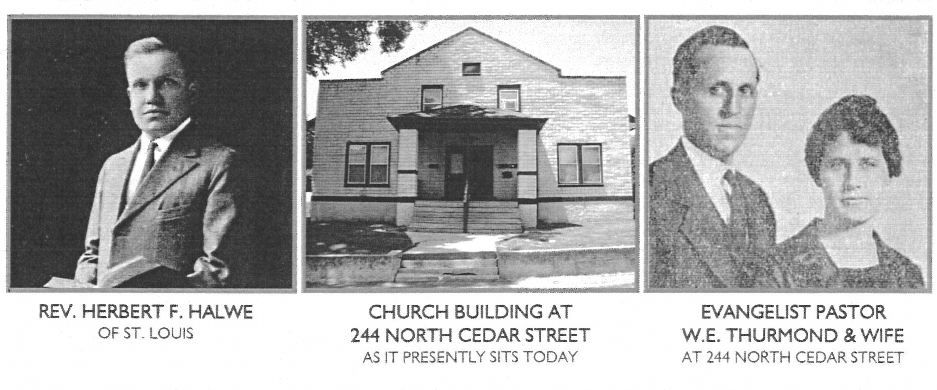
An unnamed person tried to pastor a short time, but due to excesses, the church began to fail. He is only mentioned as a “false prophet”.
Reverend Melvin Smitley became pastor around 1930, and stayed until there was a church consolidation in 1932. He left Galesburg to become a nationally known Assemblies of God Evangelist.
Some of the Bethel Church members wanted to build a better church building, and on April 4, 1928, they started another Pentecostal church. The new church was called “The Full Gospel Assembly”, with Reverend S. Miller as the supply pastor. Many members went to both churches, Bethel and The Full Gospel Assembly.
After a short stay in a hall, on the second floor of the White Dental Parlor building, at Main Street and the public square, the congregation moved to 99 South Seminary Street and elected Reverend Bert Talcott as their pastor. He later became an Assistant Superintendent of the Assemblies of God in Illinois.
The new church secured a lot, and built a new church building at 266 East South Street. On September 23, 1928, they changed the church name to Calvary Pentecostal Church and dedicated their new building to the Lord.
A Pentecostal mission was started in Knoxville, in an old dance hall at Tinder and Ann Streets. Charles, Alva, and Ira Berard were principals. Ira Berard later became the pastor of an Independent Pentecostal church in Galesburg.
Reverend Everett L. Phillips, out of the Cleveland, Ohio and a graduate of Central Bible Institute, was called to be the first pastor, having been highly recommended by Reverend Melvin Smitley of Bethel Church.
In September 1932, the church affiliated with the General Council of the Assemblies of God. The church name was shortened in 1936 to Calvary Assembly of God.
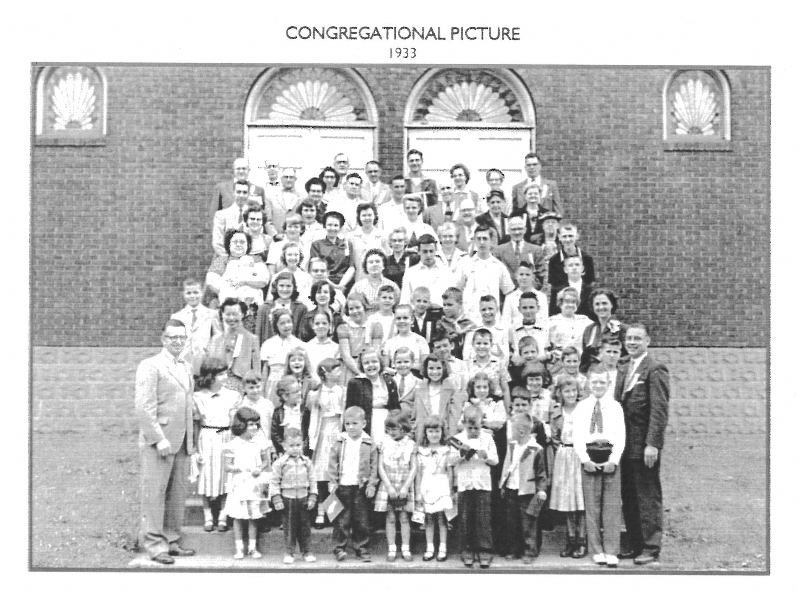
Preaching stations were also established by the Calvary young people at Aleana and Gladstone, Illinois. The Acie Hunt family moved from Galesburg to Abingdon and started Sunday School in their home, which was the nucleus of the Abingdon Assembly of God.
Calvary Assembly had a 28-piece orchestra in the mid 1930’s, and a fast-growing Christ Ambassador group, which became 92 members, in the early ’40s.
CONGREGATIONAL PICTURE – 1941
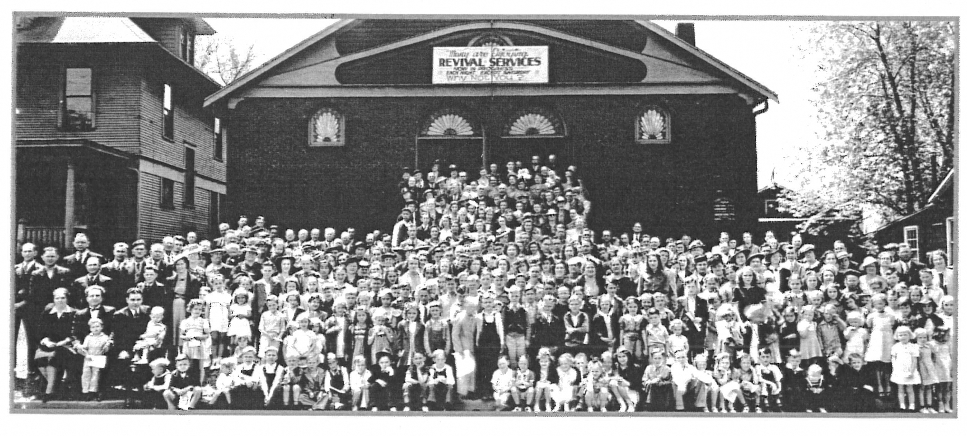
On October 21, 1936, Reverend Samuel Bell, son of District Superintendent Arthur Bell became Pastor and served until January 13, 1938, when he left Galesburg to pastor a Baptist Church in Wisconsin.
A missionary and former pastor of Calvary Pentecostal Church before the consolidation, Reverend Phillip J. Shabaz, accepted a temporary stay as pastor from February 6, 1938 until May 17, 1938. Reverend Shabaz was a missionary to Turkey.
Reverend S. Clyde Bailey was called to lead the congregation from June 20, 1938 until June 9, 1940. Evangelist Charles Neece was elected pastor July 15, 1940, but he could not serve. So, Reverend James Clark was accepted on August 26, 1940. During this time, the church grew. On May 1, 1941, the largest congregation was attained with 352 in attendance.
On August 4, 1943, Robert Shaw and John Janes of Calvary opened a second church in Knoxville. Robert Shaw became an Illinois pastor and Presbyter. Reverend O.W. Lemberg became the pastor for seven and one-half years, with his wife Margaret. Later they served in pastorates in Illinois and Wisconsin. Otto Lemberg became Illinois Christ Ambassador Secretary-Treasurer, and after moving to Wisconsin, he became Assistant District Superintendent for many years. They pastored in Janesville, Wisconsin for 25 years. Margaret Gemberg was Wisconsin District Woman’s Ministries Vice-President for 8 years. She still keeps active with this work since Brother Lemberg passed away. They were members of the Galesburg church.
Mr. M.F. Hendrickson, with Mr. James Bergi, and Mr. Donald Porter operated a Sunday School on Sunday afternoons in the factory district on McClure Street until Mr. Henderickson was transferred to Pekin, Illinois in his work. The Sunday School of around 40 was brought into the Calvary Assembly of God congregation. Out of this Sunday School, Reverend Joe Hanna came. Later he became a pastor in Illinois and an Indian missionary in Arizona and New Mexico.
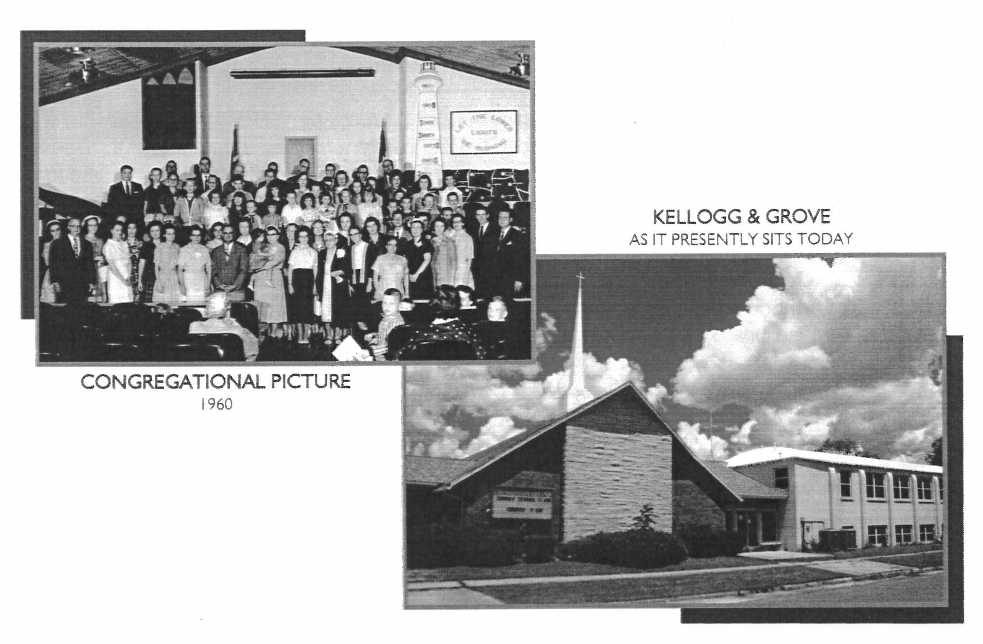
Reverend E.R. Bucher, an Evangelist, became pastor on October 7, 1946 until October 23, 1949. Reverend Hinecker was made temporary pastor from December 21, 1949 for a short period. George Clark, a missionary to Central America became Pastor in March 1950. He served until January 20, 1954, when his wife Lucille acted as pastor until school was out in June.
Harry Walterman followed George Clark and pastored from February 19, 1954 to 1966. During his tenure, the Knoxville Assembly merged into the Galesburg Assembly on July 9, 1954. On April 27, 1955, the church gave their old Sunday School bus to the Monmouth Assembly of God. The Monmouth church was started again with a new membership after nine years without a church. Reverend Donald Porter had helped Reverend E.L. Phillips in forming the first congregation. He was Christ Ambassador President in the Galesburg Church before going into the ministry.
It was decided at a Special Business Meeting at Calvary Assembly of God, on June 27, 1956 to purchase the property east of the sanctuary. Expansion eventually fell through and the church voted on December 14, 1960 to purchase and remodel the old Grove Theater on Grove Street and Kellogg Street. Pressed for ample parking and Sunday School classes, the old theater was made into a two-story educational unit first.
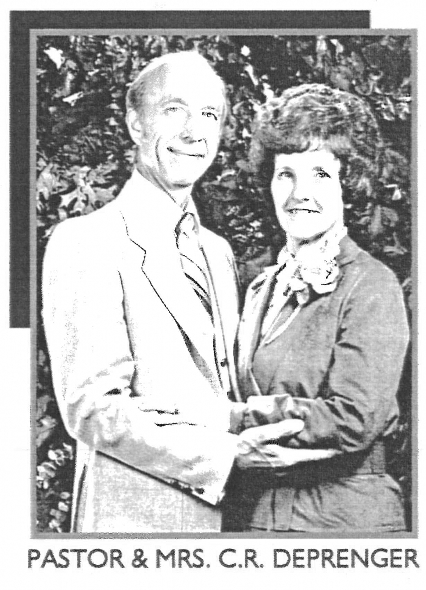
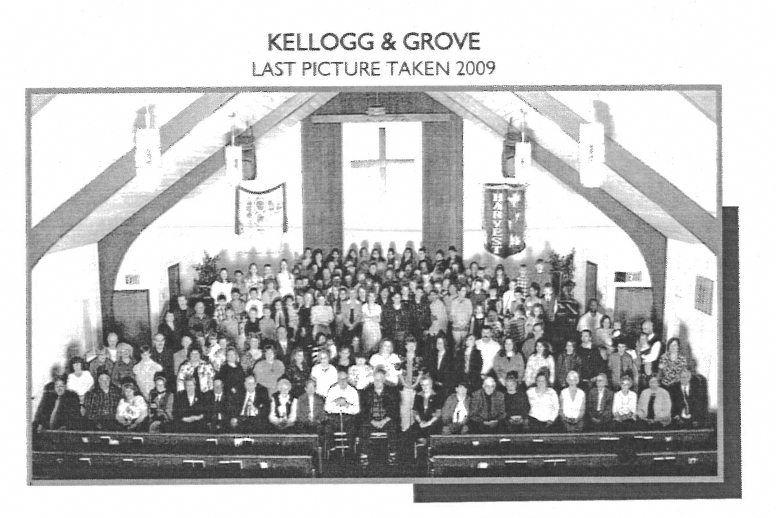
Reverend Jeffery W. Morrow and his wife Sharon are still serving as of this year’s 95th Anniversary Celebration.
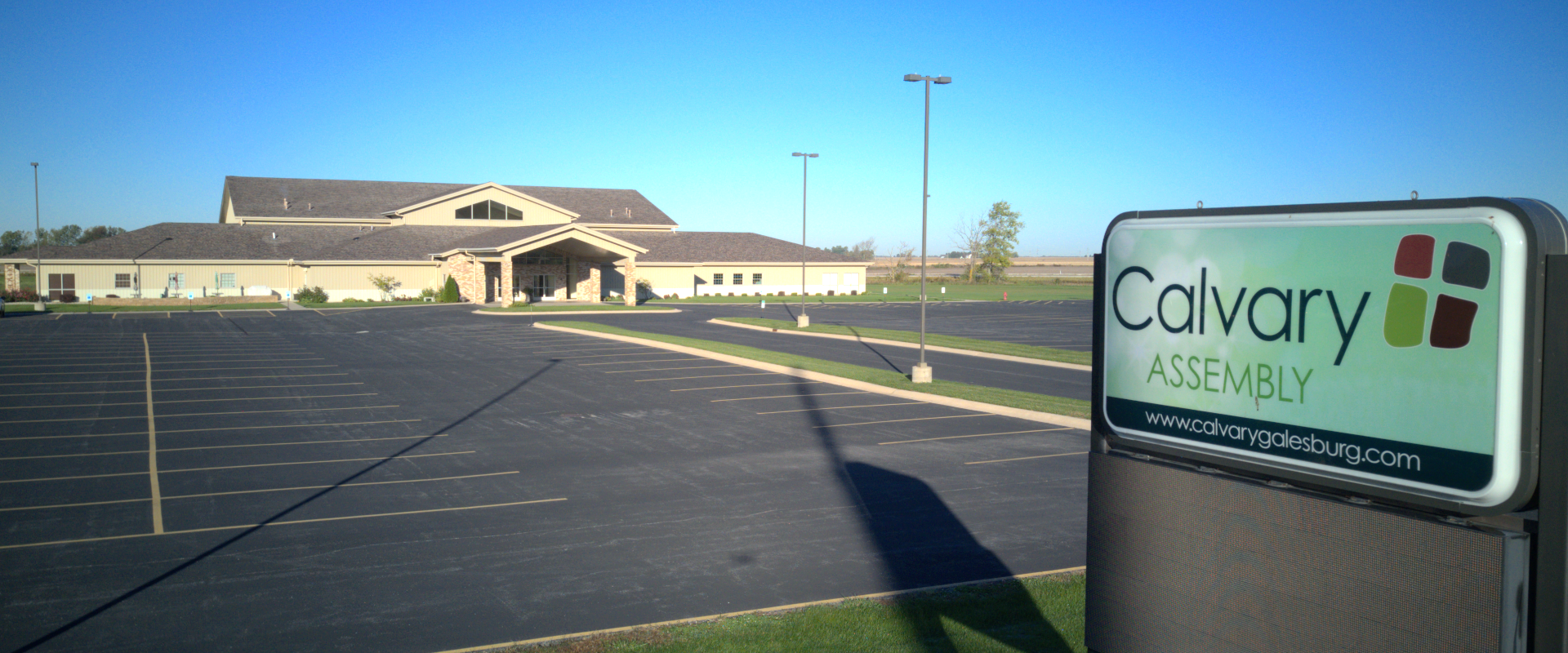
There were struggles with false doctrines, lack of finances, and shortages of workers. Often there were severe contrasts: men weeping at the altars, or, as one man did, dragging his wife from the church by her hair. There were huge revivals and times when no pastor would come to serve. Always, there were those who lived by the Holy Spirit’s direction and saw us through the hard places with fasting and prayer.
According to eyewitness accounts, and the Calvary Assembly Historians, as of the early 1960’s, there were over 50 ministers, minister wives, missionaries, and special church workers, youth pastors, prison ministries and Rescue mission workers that came out of Calvary Assembly of God. Former pastors have served in the Illinois District and General Council capacities. There are at least fifteen churches in the Galesburg and surrounding area that are off-shoots of the original church. Literally, thousands of people have been saved, healed, and blessed by the ministries of those sent out from our congregation.
Calvary PASTORS
BETHEL CHURCH PASTORS
P.C. Nelson – 1924 to 1925
A.A Carpenter – 1925 to 1926
Herbert Halwe – 1926 to 1928
W.E. Thurmond – 1928 to 1930
Melvin Smitley – 1930 to 1932
CALVARY PENTECOSTAL CHURCH PASTORS
Pastors who served from 1928-1932
S. Miller
Sam Perry
Philip Shabaz
Roy Caldwell
Bert Talcott
Guy Phillips
Charles Harris
The Church dissolved in 1932 and reunited with Bethel Church.
CALVARY PENTECOSTAL AG PASTORS
Bethel Church and Calvary Pentecostal Church reunited under the name Calvary Pentecostal Assembly of God Church in September 1932. The name changed to Calvary Assembly of God in 1938.
Everett Phillips – 1932 to 1935
First Pastor of the reunited churches.
W.T. McMullen – 1935 to 1936
Samuel Bell – 1936 to 1938
Philip J. Shabaz – 02/38 to 05/38
Temporary Pastor
S. Clyde Bailey – 1938 to 1940
Jimmie Clark – 1940 to 1943
Hardy Steinburg – 1943 to 1946
E.T. Bucher – 1946 to 1949
Rev. Hinecker – 1949 to 1950
George Clark – 1950 to 1954
Harry Walterman – 1954 to 1966
Dave Iverson – 1966 to 1969
C.R. DePrenger – 1969 to 1989
Gary Watkins – 1989 to 1990
Jim Snider – 1990 to 1997
Bob Malone Jr. – 1997 to 2011
Gary Blanchard (Interim) – 2011 to 2013
Jeffery W. Morrow – March 2013 to Present
